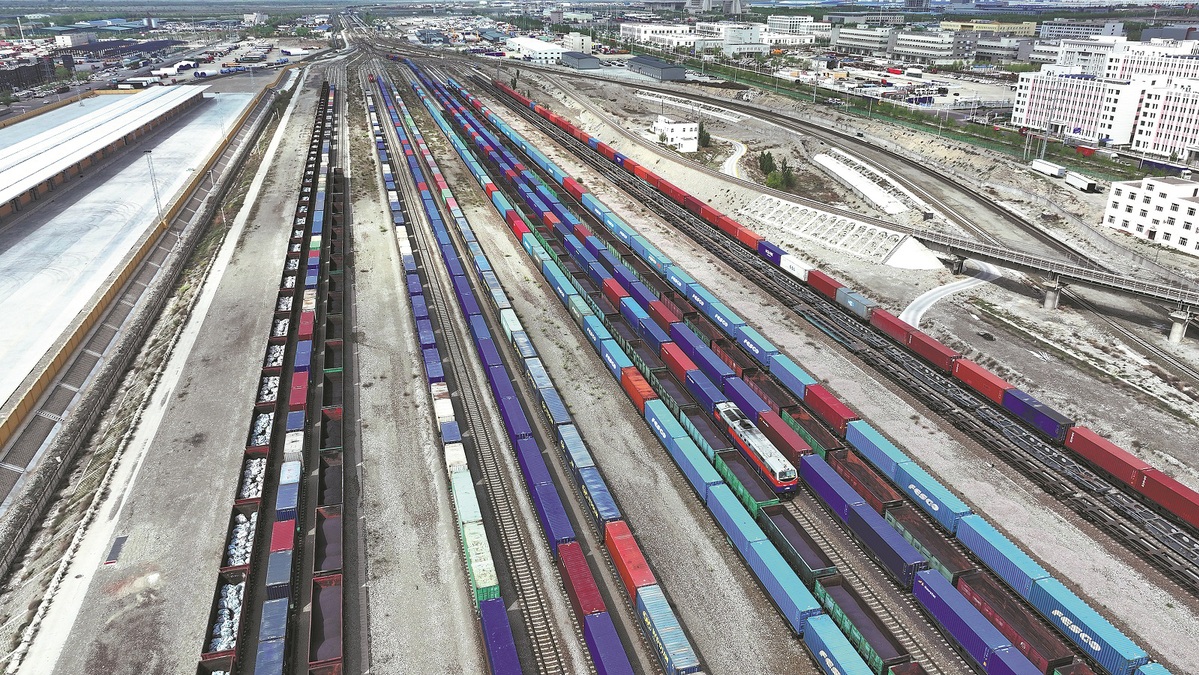
BEIJING - China's Xinjiang Uygur autonomous region respects and protects ethnic minorities' right to learn and use their own spoken and written languages, according to a white paper released on Friday by the State Council Information Office.
The regional government takes a sound approach to protecting the spoken and written languages of all ethnic groups, and encourages them to learn languages from each other, said the document titled "CPC Guidelines for Governing Xinjiang in the New Era: Practice and Achievements".
Xinjiang has autonomous areas at all three levels - regional, prefectural, and county level. It has five autonomous prefectures and six autonomous counties, all of which enjoy extensive autonomy as prescribed by law.
The people of all ethnic groups have the rights to participate in the administration of state affairs, to receive education, to use and develop their own spoken and written languages, and to preserve and protect the fine traditional culture of their own groups, the white paper said.
Average life expectancy rises to 77
The docuement also indicated that the average life expectancy of residents in the region rose from 30 years in 1949 to 77 years in 2024, showing significant improvement in the region's ability to safeguard public health.
It pointed out that Xinjiang continues to improve its policies on promoting public health and has significantly increased its protection of people's health.
According to the white paper, local patients can now obtain treatment for everyday health issues at the community level, for common illnesses in counties and prefectures, and for serious diseases within the region.
Over 4 trillion yuan allocated since 2012
Since 2012, the central government of China has allocated more than 4 trillion yuan ($562.3 billion) in transfer payments to Xinjiang, including nearly 543.48 billion yuan in 2024 alone, the white paper showed.
Since the 18th National Congress of the Communist Party of China in 2012, the central government has allocated over 200 billion yuan in paired assistance funds for Xinjiang, secured 3 trillion yuan in investments for economic cooperation projects, and introduced more than 15,000 enterprises into the region, helping Xinjiang onto a path of high-quality development, according to the white paper.

Improvements in infrastructure
Meanwhile, the document pointed out that Xinjiang has seen comprehensive improvements in infrastructure.
To optimize infrastructure layout, structure, functions, and system integration, the region has made overall planning for the construction of 10 networks covering railways, highways, aviation, power, natural gas, logistics and computing, said the white paper.
The operating mileage of railways totaled 9,202 km as of 2024, up from 4,914 km in 2012, reaching all prefectures, as well as over 80 percent of county-level administrative regions, according to the white paper.
ALSO READ: Xinjiang powers ahead as nation's energy distributor
The highway network has also grown, from 165,900 km in 2012 to 230,000 km in 2024. All prefectures in Xinjiang are now accessible by highway, as are more than 90 percent of administrative regions at county level.
The number of civil air routes in Xinjiang now totals 595, of which 25 are international routes, connecting to 17 countries and regions. A network of air routes covering entire Xinjiang and radiating to the east and west has now basically formed.
Information highway is also taking shape, with optical cables now extending 1.78 million km, the white paper said. All counties in Xinjiang are connected with 1000M fiber optic networks, towns with 5G networks, and villages with broadband networks.
Stronger foundations for stability
The document also showed stronger foundations for stability, peace and security have been built in Xinjiang.
Social stability and lasting peace and security in Xinjiang are of overarching importance to overall reform, development and stability in China, according to the white paper .
While balancing development and security, Xinjiang has maintained social stability as a top priority, said the white paper.
It has continued to fight terrorism and maintain stability in a law-based and regular manner, preventing and defusing risks in various fields, as well as interference and sabotage by external forces, it noted.
A historic transformation from chaos to stability and from stability to governance has been achieved in the region, the white paper said.

Gateway for opening up to the west
Xinjiang has consciously integrated its regional opening-up strategy into the country's overall plan of opening up to the west, according to the document.
Xinjiang aims to build a golden channel across the Eurasian continent and a gateway for opening up to the west, said the white paper.
Consequently, it has accelerated the development of broader channels for opening up. Xinjiang has established 19 ports, including the Kunjirap Port, which is open all year round, according to the white paper.
A total of 16,400 freight trains traveled through Xinjiang on the China-Europe Railway Express in 2024, marking the fifth consecutive year that the number of trains on the line had exceeded 10,000, it said.
READ MORE: Xinjiang sees rapid growth of foreign trade
The number of Xinjiang's economic and trade partners also increased significantly from a small handful in the 1950s to 196 countries and regions in 2012, and to 211 in 2024, according to the white paper.
The platform for opening up has improved further. China (Xinjiang) Pilot Free Trade Zone was approved and set up in October 2023. Over the following year, more than 9,000 enterprises moved into the Zone, whose total import and export value accounted for over 30 percent of the region's total, it said.


